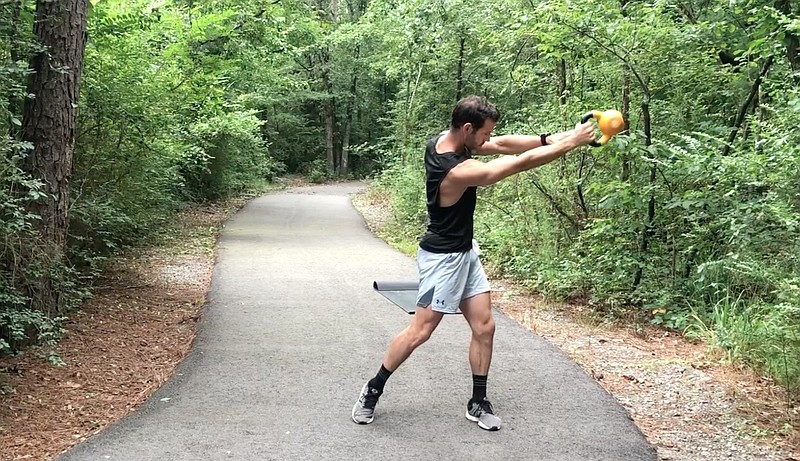With each year that passes, I find myself ever so slightly more injury-prone. Seemingly innocuous activities must now be approached with caution to avoid tweaks in the neck, back or shoulder.
It is a bizarre feeling for someone who has been physically active for two decades, but I also recognize the many benefits associated with being a mature adult.
This week, I will do what I can to explain how to leverage life experience to counteract the physical limitations of aging. Plus, I will introduce an exercise that challenges a couple of my trouble spots — the middle and lower back.
After 30, adults begin to lose 3% to 5% of their muscle mass every decade. This slow decline in musculature leads to weakness and reduced mobility over time. I have known this physiological fact for more than 20 years, but it's a whole different ballgame going through it personally.
There are strategies to combat this natural process, and I intend to use them early and often. My goal is to blunt the decline of muscle mass by training, eating healthfully and avoiding injury. The first two are about will power, but injury avoidance requires careful consideration of the exercise prescription, leisure activity selection and more.
The thing is, I know my body better than anyone else ever could. I know what things I am capable of, what limitations I have and how my body reacts under various conditions. I always use caution when exercises require core twisting, flexion of the trunk or lateral hip movement. For these types of movements, I ease into the range of motion very carefully and use very low resistance. Doing so allows my body to adjust to the stimuli, activate the appropriate muscles and lubricate the joints.
Obviously, going through this warming-up process adds time to my workout, but I have learned (sometimes the hard way) that I must add this important step to any routine involving those movements. In this way, I use my experience and knowledge of my own physiology to overcome the challenges presented by aging. The result is more successful workouts, fewer injuries and more time with less loss of my muscle mass.
This week's exercise is a perfect example of the type of movement that, for me, requires an additional warmup. The Lateral KB Swing involves twisting and momentum, and it can be difficult to control without careful attention to form and function. But it's a fantastic exercise, and one that I try to do at least once a week.
- Grasp a kettlebell with your right hand and stand with your feet shoulder-width apart. Your arms should be fully extended in front of your body.
- Slowly "swing" the kettlebell from your right to left, allowing your torso to twist naturally as you do this. Your left arm should also move to the left and upward to allow that natural swing for your upper body.
- As you reach your endpoint, allow the right hip to drop slightly to accommodate the movement.
- Now, swing the kettlebell back to the starting position and repeat for 12 repetitions. Keep in mind that this is a one-sided swing for all 12 repetitions.
- Once finished, switch the kettlebell to your left hand and repeat on the opposite side.
I recommend easing into this one with a very small range of motion initially.
Try to feel the weight of the kettlebell at different points along the swing and be sure to intentionally activate the abdominal muscles throughout.
It's a great way to maintain upper body strength but also helps to promote rotational mobility in the trunk, something that many aging adults have trouble with. Enjoy!
Matt Parrott has a doctorate in education (sport studies) and a master's in kinesiology and is certified by the American College of Sports Medicine.
vballtop@aol.com
